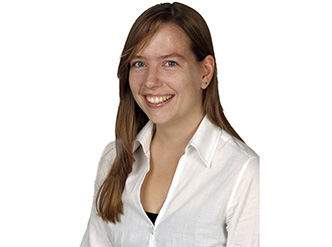Welcome to the twelfth issue of Science in School Editorial article

EMBL Photolab
Hands-on science is also the key to Greek science teacher Theodoros Pierratos’s success: he and his students entered – and won – a competition to send an experiment into space. This and the resulting contact with the European Space Agency have changed the way his students view science.
Games are one way to grab the attention of your students. The virtual microarray activity introduces the colourful and sophisticated technique of the DNA microarray into the classroom. And as if that wasn’t enough colour, Sonia Furtado investigates how glow-in-the-dark jellyfish led to a Nobel Prize in Chemistry in 2008 – for the discovery and development of green fluorescent protein.
From green jellyfish to black boxes: ?udmila Onderová describes how to build and use black boxes in the classroom – inspiring your students to think scientifically by hiding electric circuits inside them.
Inspiring a school full of students can be a daunting task, but how would you go about motivating a different group of students every few months? Substitute teacher Jeanne Keweloh encounters exactly this challenge: new students, new colleagues, new topics – she’s always on the move.
The challenge of Katy Lithgow’s job is very different: using science to preserve paintings, textiles, furniture and other contents of historic houses. One of the problems she faces these days is climate change, which can cause flooding and increased damage by insect pests, for example. Why not combine our profile of Katy with Dudley Shallcross’s teaching activities? In the latest article in our climate-change series, he and his colleagues propose an experiment involving solar power as a source of energy.
The most common sources of energy are still hydrocarbons. Continuing our energy series, Menno van Dijk explains why we need to use this stored energy from the Sun carefully. Of course, solar radiation is not the only type of natural radiation around us. The Portuguese ‘Environmental radiation’ project developed school activities to safely introduce radioactivity into the classroom. Luis Peralta and Carmen Oliveira offer one experiment for you to try: growing irradiated seeds.
Staying with the topic of radiation, Halina Stanley shows how scientists developing a microwave drill discovered how to modify it to produce nanoparticles – and impressive balls of plasma. To create your own plasma balls and have more fun with microwaves in the classroom, why not try her accompanying teaching activities?
In her articles, Halina has used Science in School to share her teaching ideas with teachers across Europe and beyond. You too can contact your international colleagues through the journal by using our online discussion forum. If you want to share your ideas, find answers to scientific questions or start collaborations with teachers in other countries, the Science in School forum could be the place to start.
You may notice another, more recent addition to our website: small advertisements. We hope that income from advertising will help ensure the future of Science in School – particularly of the print version – and enable us to continue to offer the journal to you free of charge. To support us, please tell potential advertisers (such as your school laboratory suppliers or textbook publishers) about the opportunity to advertise in both the print and online versions of Science in School. For more information, see:advertising.





